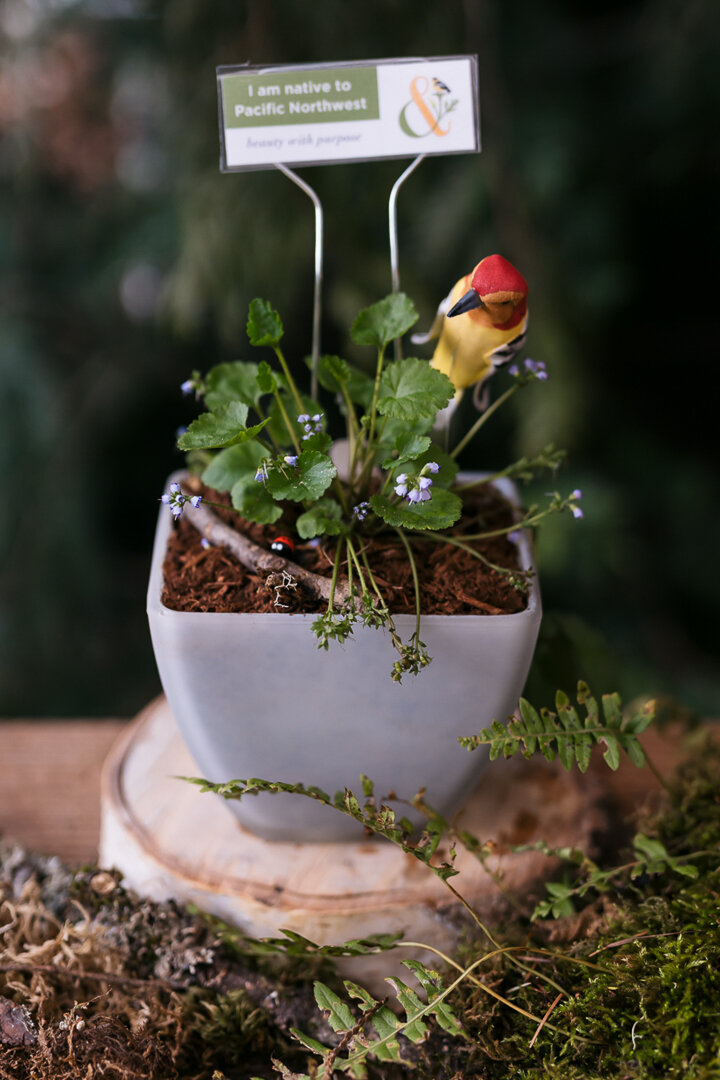Ecological Gardening for your Apartment
Would you like to help and have an optimum impact for our habitat outside your apartment when you don’t have a garden? You’re in luck because when you provide the right source, in this case, native plants from your region, you don’t need a giant space to be part of the change for our habitat.
What are native plants? Native plants are those that occur naturally in a region in which they evolved; not being introduced from other countries even though they’re acclimated to the environment and drought tolerant. Native plants are the base food web which life depends on, including insects, birds and people. Without them and the insects that co-evolved with them, local birds cannot survive.
Using native plants for your container gardening offers so many ecological, psychological benefits that impact both humans and our habitat. With global warming, plants moderate temperatures and reduce energy usage. Connecting with nature wherever you live, reduces anxiety/stress, promotes creativity and empowers you to be part of the change you want to see for our environment and for generations to come.
How to container garden in your apartment.
Step 1— Choose the right pot
Choose the right size containers.Size matters ;) It is important to choose containers that are proportional to the chosen plant and allow plenty of room for root growth. If you’re going to have more than one container, I’d suggest having different heights and sizes to create dimensions and interests.
Get frost proof containers. Depending on where you live, try to choose frost-proof containers. Glazed ceramic and clay pots are common and usually work best, however, you need to insulate clay pots to avoid cracking when subjected to excessive water and cold temperatures. You can use tin or metal containers if they’re placed in a shaded area as they get heated more than ceramic and clay pots. Roots in pots are subjected to colder and hot temperatures than in the ground, so either place them in a protected spot or insulate them.
Be sure it has drainage holes. I would always recommend choosing containers with holes for drainage so your plant is not sitting in water for too long which can cause root rot.
Create a theme.Have some fun with determining the theme of your container gardening. Do you want it to be modern, clean, monochromatic, and simplistic, shabby chic, eclectic repurposed farm, etc. As long as they look cohesive together.
Step 2—Choose the right plants.
Why native plants? Annual plants are traditionally used for container gardening. However, annuals take a lot of energy (heat, carbon, fertilizer and pesticide) to get them to grow, live only a short period of time (they don’t survive over the winter) and serve little benefits (some none, even invasive) to our ecosystem. On the contrary, native plants are more resilient, adaptable to the climate, and take less energy/effort. But most importantly, by using native plants for your container gardening, you’re creating a mini habitat stepping into nature on your porch or balcony while attracting native insects that increases pollination opportunities for insects and birds that are passing by. You’re styling from an ecological point of view; it is a win-win. Native plants are versatile to fit your aesthetic style, easy to maintain and attract beneficial insects and other wildlife For information on the best native plants to choose to lure wildlife to your mini-habitat, check out the blog here
Well, it is time for us to help our creatures by providing more habitat and here are some tips to a happy ending story:
Assess your environment where you want to create your habitat. Is it full-sun, full-shade, part sun, part shade, sun reflection to the window that adds heat, can you see them easily from inside your apartment if possible to enjoy the wildlife visitors?
Mimic nature. Choose your plants accordingly based upon your environment yet mimic their natural habitat including choosing the soil. Native plants don’t need fertilizers, you can simply add compost, wood chips and shredded leaves to keep the soil biology going. Most woodland plants that need moist, rich soil will appreciate the addition of extra compost, while plants that need to dry out between waterings such as succulents will do best with fast draining soil (add small gravel, sand and/or perlite to facilitate drainage). Also, group plants that bloom in different times if possible to sustain wildlife needs during winter or try not to choose all deciduous plants in one pot to create interest all year long. Please don’t buy Miracle Grow products as it is not an environmentally conscious company and their products are filled with chemicals. Also, try to find soil that doesn't contain peat moss because they’re not harvested sustainably. Check out my other blog on choosing your native plants!
Basic design guide.Depending on the size of your container, you can have 1 to 5 plants in a container with similar needs for soil, light and watering requirements. I always go with an odd number; it’s a design thing. These are the elements if you want to go for 3 or 5 plants: thriller (focus/accent/taller plant), filler (to fill in space) like ferns, grasses and sedges, and spiller (plants that hang over the container) like some sedums, strawberries, creeping mitella, etc.
Themes.You can also choose themes such as pollinator garden, medicinal/herbal garden, or fairy garden or living altar by adding fun decorations, gemstones, etc.
Ready to create your own ecological garden, but not sure how to do it right?
Check out my workshop that includes the tour of my educational habitat garden, and I’ll walk you step-by-step through the process so you don’t waste unnecessary time researching and hoping you’ve got it right. Sign up here to reserve a spot! And when you sign up to my newsletter, you’ll get a free pdf guide on how to create your own mini-habitat garden and bring your bestie to create one with me!


